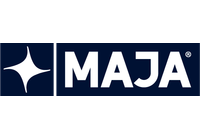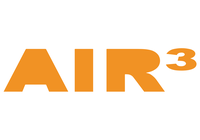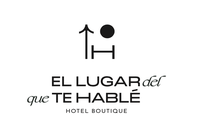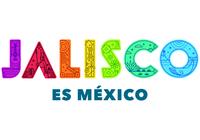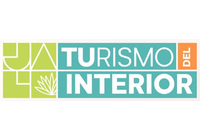- Blog
- Summary
- Details
- Pilots
- Registration
Event info
MONARCA PARAGLIDING OPEN is organized by ALAS DEL HOMBRE
It is an Iconical competition in the Americas,
The name Monarch is due to the wonderful phenomenon of the migration of the Monarch butterfly that travels from Canada and the USA to the Oyamel forests located exactly in the flight zone of Valle de Bravo and El Peñon in the State of Mexico to spend the winter during the months of November to March, exactly the same thing happening with paragliding pilots.
Flying site
Valle de Bravo is known for being not only a good place to fly but also for its consistency of many good and reliable flyable days. The best flying season starts on January and it goes until April when the rain season starts.
Expand page for more details- left before start of event
-
Registration will open on
30/03 12:00 (America/Mexico_City)
-
🛰️
Live trackers supplied
The organiser will supply Live trackers to you, for safety and scoring
-
🚁
Helicopter rescue
The region supports helicopter rescues
-
⚕️
Medic on takeoff
There will be medical rescue services at launch
-
📱
Good phone coverage
The region generally has good phone coverage
-
📻
Radio coverage
We will be monitoring radios for your safety whilst you fly
-
🛰️
Live trackers mandatory
Live Tracking is MANDATORY in this event to score. The organiser will provide the trackers.
-
🚐
Launch Transport
There will be vehicles supplied to take you to launch
-
🥾
Retrieve included
There will be retrieve vehicles available to return pilots to HQ
-
💩
Toilets on takeoff
There are toilets at, or near, the launch
-
📢
Airtribune blogging
The organisers are using Airtribune for registration, tracking, blogging and to publish scores
-
🥪
Lunch packs
There will be daily lunch packs for pilots
-
🗺
Maps are supplied
The organisers will give you printed maps at registration
-
💳
ID Cards
The organisers will give you an ID card with all the essential items listed
-
🎉
Party
There will be an organised party during or after the event
-
👕
Free gift
You will receive a tshirt or other welcome gift
-
🅰
PWCA Letters
This event awards PWCA letters
-
♻️
Plastic reduction
The organisers support reducing the use of unnecessary plastic at the event. This includes NOT giving disposable water bottles
Contacts
-
Director
- Miguel Gutierrez
- +52 7225236936
- director@monarcaopen.com
-
Financial
- Claudia Gomez Palacios
- +52 7222457918
- claudia@alas.com.mx
Event info
MONARCA PARAGLIDING OPEN is organized by ALAS DEL HOMBRE
It is an Iconical competition in the Americas,
The name Monarch is due to the wonderful phenomenon of the migration of the Monarch butterfly that travels from Canada and the USA to the Oyamel forests located exactly in the flight zone of Valle de Bravo and El Peñon in the State of Mexico to spend the winter during the months of November to March, exactly the same thing happening with paragliding pilots.
Monarca has been carried out for two decades taking off from El Peñón, a flying area with a privileged climate, where you can fly practically every day of the year in extremely predictable conditions with incredible ceilings and convergences that extend over a volcanic territory towards low hot lands or forested areas with the majestic Xinantecatl (Nevado de Touca) of more than 5000 meters high.
Selection and entry fee
PayPal: $505 USD
Selection
1) Maximum 130 pilots
2) Monarca Paragliding Open Pilotos must hold equivalent F.A.I. IPPI 4 or who present a valid license and comply with the Organization criteria.
3) Competing pilots must have full medical insurance. In case of accident make sure which level of Hospital you or your insurance can cover:
Low Level
Mid Level
High Level
4) Competing Pilots must satisfy themselves and the organisers that they are adequately experienced to compete and fly in the prevailing (thermic) conditions at El Peñón in January
5)The organisation reserves the right to refuse admission.
6) In the case of the event being over subscribed a priority selection criteria for pilots may be introduced.
A number of places will be reserved by the organisation.
Eligibility - Gliders
1) Paragliders must be Certified - Gliders should have appropriate EN stickers, gliders not bearing stickers will be scrutinised as will all prize winning gliders.
2) Only paragliders Certified on EN/B, EN/C, EN/D, to EN/CCC standards
3) EN/A paragliders are not allowed
Eligibility - Teams
1) Teams comprise 4 pilots, scores for best 3 in each task to count
2) Teams must encourage to have at least one Club pilot (EN/B) if available and a maximum of 1 CCC Class.
Pilots will be scored by class: Fun, Club, Sport, XCclass and Open plus Mexican, Rookies and Women.
Class will once again be determined by certification.
Physical registration will be in Alas del Hombre HQ on sunday 11th January 9:00am to 6:00pm.
Live Tracking is part of the package. Not only a safety measure, but also so your family and friends can see your progress – no pressure!
Equipment: Safety and Scoring
1) Pilots must carry 2m radio utilisable in the bands between 145 MHz which will be kept on the competition channel at all times when flying.
2) Pilots must carry a recently repacked reserve parachute
3) Pilots will be supplied with a Live Tracking device each flying day
4) Tracks for scoring will be taken from the tracker whenever possible. Pilots should also use an approved GPS for back up: see check list on GPSdump website for details of approved type.
5) GPS must be capable of recording altitude in the track log
Documents required at registration
-
FAI Sporting Licence
Issued by your local NAC on behalf of the FAI. You cannot normally compete in an FAI event without one. Contact your National Association (NAC)
-
FAI IPPI Card
The FAI IPPI card is an International card that states your skill level. It is issued by your National Association and matches the level or your flying Licence
-
National Licence
The organiser requires you to present your National flying licence.
-
Signed Application form
You will need to sign an applicaton form at the venue. Usually the organiser will provide it on arrival.
-
Signed Waiver/Release form
You will need to sign a waiver or release document to show you understand the risks. Usually the organiser will provide it on arrival.
-
Identification documents needed
You will need to provide photo ID on arrival. This could be Passport, Driving Licence or National ID, for example.
-
Liability Insurance
You must provide the organiser with a copy of your liability (3rd party) insurance documents
-
Rescue/Medical Insurance
You must provide the organiser with a copy of your medical, rescue and repatriation insurance. You can purchase Global Rescue cover from Airtribune
Cancellation Policy
Refunds:
Cancellation date more than 60 days before competition start date: 80% refund
Cancellation date between 60 and 30 days before competition start date: 50% refund
Cancellation date less than 30 days before competition start date: 0% refund
Prize fund and scoring categories
General schedule
09:00 - 17:00 - Official Registration
19:00 - 20:00 - Mandatory Safety Briefing
Monday, January 12 - Saturday 17, 2026
Contest flying days
Saturday, Saturday 17, 2026
21:00 - Prize-giving and closing ceremony
22:00 Party
Daily schedule
08:00 - Headquarter opens
09:00 - Transport to take-off
10:00 - Meet Director / Task and Safety Committee meetings
10:15 - Pilots' briefing / Previous task official results / Task definitio
11:30 - Take-off window opens
16:30 - Scoring office opens
22:00 - Provisional results
Accommodation and Activities
How to get here
https://monarcaopen.com/travelinfo.php
None
Valle de Bravo Mexico
Plane
First, get your flight directly to Mexico City. Having the extra ride on an airplane to the Toluca airport is a waste of money and not that much time saving as you could believe.
Bus
To take a bus ride to Valle go to bus station named "Observatorio" (Observatory). Taxi from Mexico airport to bus station cost $200 Mexican pesos (around 11 euros)
Time schedules for the Valle the bravo bus may vary, but basically you will find daily departures from 5:00 AM up to 5:00 PM, one every hour. (For example, 5:15, 6:15, 7:15 and so on)
Be sure to buy and to ride the "Libramiento" bus route to Valle and *NOT* the "Amanalco" route. The new "Libramiento" route will take you to Valle in less than three hours thanks to the fact that about half of the way uses the new highway.
Downloads
Waypoint files
Organizers
 Alas del Hombre
Alas del Hombre
Santa mARIA
51200
Valle de Bravo
Tel: +52 726 2626382
www.alas.com.mx
Contacts
-
Director
- Miguel Gutierrez
- +52 7225236936
- director@monarcaopen.com
-
Financial
- Claudia Gomez Palacios
- +52 7222457918
- claudia@alas.com.mx



